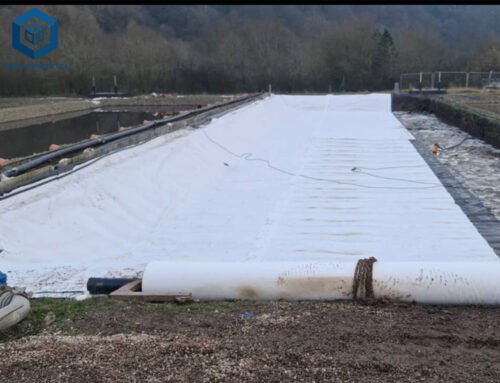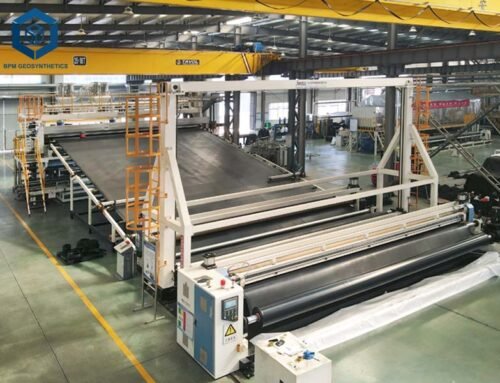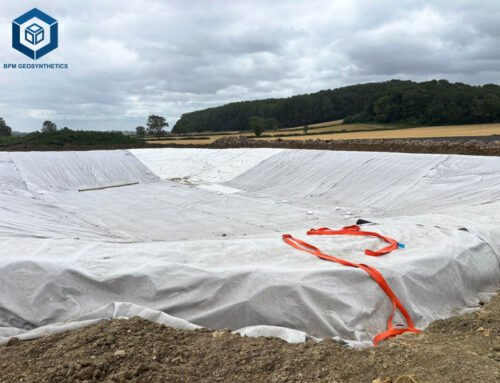Geogrids are essential geosynthetic materials in modern civil engineering, providing robust solutions for soil stabilization, reinforcement, and erosion control. With global infrastructure spending projected to reach USD 9.5 trillion by 2030, driven by urbanization and sustainable construction demands, geogrids have become a cornerstone in projects like road construction, retaining walls, and landfill management. Understanding the Geogrid Mesh Price is critical for project managers, engineers, and contractors aiming to optimize budgets while ensuring structural integrity. This comprehensive guide delves into the factors influencing geogrid mesh prices, provides detailed pricing data, specifications, and actionable insights to help you make informed decisions for your next project.
1. What Is Geogrid Mesh?
Geogrid mesh is a geosynthetic material made from polymers such as high-density polyethylene (HDPE), polypropylene (PP), or polyester (PET). Its grid-like structure, with open apertures, allows it to interlock with soil or aggregate, enhancing tensile strength and load-bearing capacity. Geogrids are used in civil engineering applications to stabilize soil, reinforce retaining walls, and improve the durability of infrastructure like roads, railways, and embankments. According to ASTM D6637, geogrids can improve soil stability by 30–50%, reducing construction costs by 15–25%.
Types of Geogrid Mesh
Geogrids come in several types, each designed for specific applications with varying cost implications:
- Uniaxial Geogrids: Stretched in one direction, offering high tensile strength (up to 200 kN/m) for applications like retaining walls and slopes. Price range: $0.50–$2.50/m².
- Biaxial Geogrids: Stretched in two directions, providing balanced strength (20–100 kN/m) for road construction and pavement stabilization. Price range: $0.80–$3.50/m².
- Triaxial Geogrids: Feature a three-dimensional structure for multi-directional reinforcement, ideal for complex projects like foundation reinforcement. Price range: $1.50–$5.00/m².
- Composite Geogrids: Combine polymer grids with drainage elements, used in retaining walls and embankments to reduce hydrostatic pressure. Price range: $2.00–$7.00/m².
In 2023, biaxial geogrids accounted for 45% of global demand, driven by their versatility in road construction.
Key Specifications and Parameters
Geogrid performance depends on several technical parameters, which also influence pricing:
- Tensile Strength: Ranges from 20–400 kN/m, with higher strengths commanding premium prices. For example, HUESKER’s Fortrac® geogrids offer 20–400 kN/m, enhancing soil stability by 50%.
- Material Type: HDPE (50% market share), PP (40%), and PET (10%) are common. HDPE is durable and UV-resistant, while PP is cost-effective. PET is used in high-strength applications but is pricier.
- Aperture Size: Typically 10–100 mm, affecting interlocking efficiency. Smaller apertures (10–25 mm) suit fine soils, while larger ones (50–100 mm) are for coarse aggregates.
- UV Resistance: 90% retention after 500 hours of exposure, per ASTM D4355, ensures longevity in exposed applications.
- Roll Size: Standard rolls range from 50–100 m in length and 1–6 m in width, impacting bulk pricing.
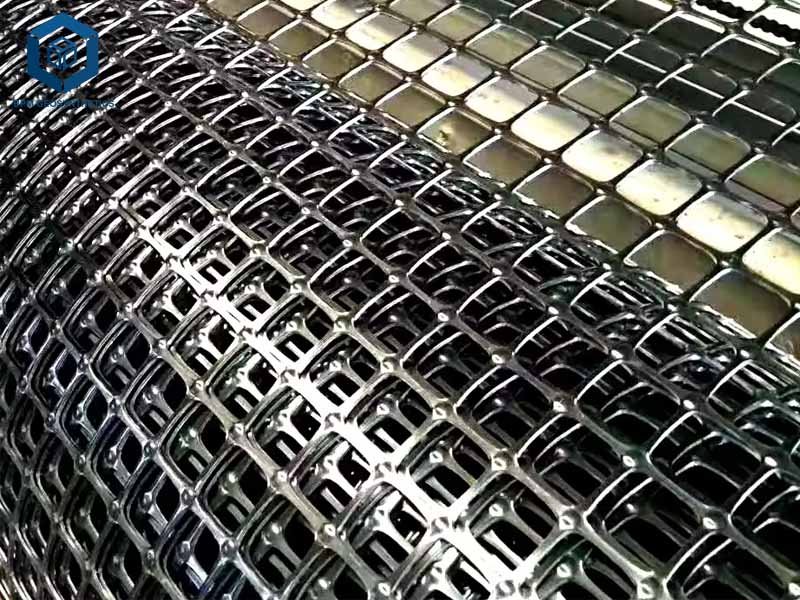
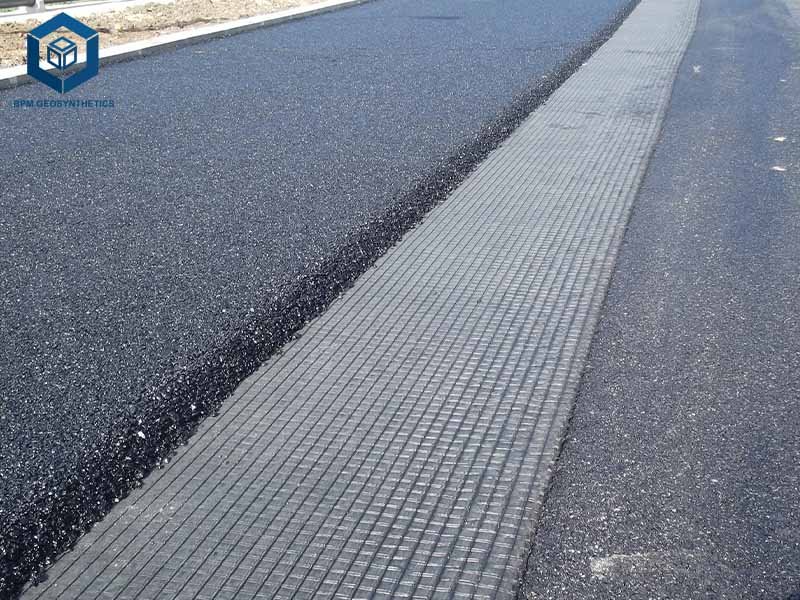
2. Factors Influencing Geogrid Mesh Price
Geogrid prices vary widely based on several factors. Understanding these can help you estimate costs accurately and optimize project budgets.
2.1 Geogrid Mesh Price – Material Type
The choice of material significantly affects geogrid costs:
- HDPE: Offers high durability and chemical resistance, priced at $0.80–$3.00/m². Ideal for harsh environments like landfills.
- PP: Lightweight and cost-effective, priced at $0.50–$2.50/m². Widely used in road construction.
- PET: High tensile strength for heavy-duty applications, priced at $1.50–$5.00/m². Used in retaining walls and slopes.
Fluctuating crude oil prices impact PP and HDPE costs, as they are petroleum-based. In 2024, PP prices rose 10% due to supply chain disruptions.
2.2 Geogrid Mesh Price – Geogrid Type
Different geogrid types cater to specific applications, influencing their price:
- Uniaxial: Lower cost due to simpler manufacturing, suitable for single-direction reinforcement.
- Biaxial: Mid-range pricing, versatile for multi-directional load distribution.
- Triaxial: Higher cost due to complex geometry, offering superior load distribution.
- Composite: Most expensive due to integrated drainage features, reducing hydrostatic pressure by 30%.
2.3 Geogrid Mesh Price – Manufacturing Process
Geogrids are produced through extrusion, weaving, knitting, or welding, each affecting cost:
- Extrusion: Common for PP and HDPE geogrids, cost-effective at $0.50–$3.00/m².
- Weaving/Knitting: Used for PET geogrids, increasing costs to $1.50–$5.00/m² due to labor-intensive processes.
- Welding: Produces high-strength junctions, adding 10–15% to costs for triaxial and composite geogrids.
2.4 Geogrid Mesh Price – Project Scale and Order Volume
Bulk orders reduce costs significantly. For example, BPM Geosynthetics offers 10–20% discounts on orders exceeding 10,000 m². Small-scale projects may face higher per-unit costs due to minimum order quantities (MOQs) of 500–5,000 m².
2.5 Geogrid Mesh Price – Regional and Supplier Variations
Prices vary by region due to labor, transportation, and raw material costs:
- North America: $1.00–$4.00/m², driven by high demand for infrastructure upgrades.
- Asia-Pacific: $0.50–$3.00/m², benefiting from lower production costs in China and India.
- Europe: $1.50–$5.00/m², higher due to stringent quality standards and labor costs.
Suppliers like Tensar and HUESKER charge premiums for branded products with proven performance, while local manufacturers offer competitive pricing but may lack certifications.
2.6 Geogrid Mesh Price – Certifications and Quality Standards
Certified geogrids meeting ASTM D6637 or ISO 9001 standards cost 10–15% more but ensure 98% defect-free products. Non-certified options may be cheaper but risk project delays due to defects, costing $100,000–$500,000.
3. Geogrid Mesh Price Range in 2025
Based on market data, geogrid mesh prices in 2025 range from $0.50 to $7.00 per square meter, depending on type, material, and application. Here’s a breakdown:
- Uniaxial Geogrids: $0.50–$2.50/m², used for retaining walls and slopes.
- Biaxial Geogrids: $0.80–$3.50/m², dominant in road construction (45% market share in 2023).
- Triaxial Geogrids: $1.50–$5.00/m², for complex projects like foundations.
- Composite Geogrids: $2.00–$7.00/m², for applications requiring drainage.
For example, BPM Geosynthetics supplied 50,000 m² of biaxial geogrids for a Malaysian highway in 2024 at $1.20/m², achieving 98% reliability.
Price Comparison by Supplier
- Tensar International: $1.50–$5.00/m² for InterAx® triaxial geogrids, offering 44% cost savings by reducing aggregate thickness.
- HUESKER Synthetic: $1.80–$5.50/m² for Fortrac® geogrids, with 7-year warranties.
- BPM Geosynthetics: $0.80–$3.00/m², with 24/7 support and 12-day lead times.
- NAUE: $1.50–$4.50/m² for Secugrid®, reducing pavement thickness by 20%.
Bulk pricing can lower costs by 10–30%, and local sourcing reduces transportation expenses by 15%.
4. Market Trends Impacting Geogrid Prices
The global geogrid market, valued at USD 1.35 billion in 2024, is projected to reach USD 1.97 billion by 2032, growing at a CAGR of 4.7%. Several trends influence pricing:
Sustainability and Eco-Friendly Materials
Sustainability drives demand for geogrids made from recycled materials. HUESKER’s Fortrac T eco PET geogrids, launched in 2021, reduce emissions by 15% and cost $2.00–$5.00/m². These align with European Standard EN 15804, appealing to green building projects.
Infrastructure Investments
Global infrastructure spending, particularly in Asia-Pacific (40% market share), fuels geogrid demand. India’s plan to construct 65,000 km of highways by 2022 and China’s urbanization projects increase demand for biaxial geogrids, stabilizing prices at $0.80–$3.50/m².
Technological Advancements
Innovations like 3D woven geogrids and sensor-embedded grids (e.g., Strata Systems’ StrataGrid™) enhance performance but increase costs by 10–20%. These offer real-time soil monitoring, reducing maintenance costs by 15%.
Supply Chain Challenges
Raw material price volatility, particularly for PP and HDPE, impacts costs. In 2024, supply chain disruptions raised PP prices by 10%, affecting low-end geogrid prices.
5. Applications and Cost Benefits
Geogrids offer significant cost savings compared to traditional methods like concrete, reducing material costs by 15–25%. Here’s how they add value:
Road Construction
Biaxial geogrids reduce pavement thickness by 20–30%, saving $100,000–$500,000 on large projects. For example, NAUE’s Secugrid® reduced costs by 15% on a Polish highway in 2024.
Retaining Walls and Slopes
Uniaxial geogrids enhance stability by 40%, reducing soil movement and maintenance costs. Maccaferri’s MacGrid® cut erosion by 50% in a 2024 Brazilian slope project.
Landfills and Environmental Applications
Composite geogrids manage drainage, reducing hydrostatic pressure by 30% and extending landfill lifespans by 10 years. Prices range from $2.00–$7.00/m² due to specialized features.
6. How to Optimize Geogrid Costs
To maximize value and minimize expenses, consider these strategies:
Bulk Ordering
Ordering over 10,000 m² can secure discounts of 10–20%. For instance, BPM Geosynthetics offers 15% off for orders exceeding 20,000 m².
Local Sourcing
Sourcing from regional suppliers like BPM in Asia-Pacific reduces transportation costs by 15%.
Choosing Certified Suppliers
Suppliers meeting ASTM D6637 and ISO 9001 standards, like Tensar and HUESKER, ensure 95% project reliability, avoiding costly delays.
Lifecycle Cost Analysis
High-performance geogrids like Tensar’s InterAx® reduce aggregate use by 9 inches, saving 44% on project costs despite higher upfront prices ($1.50–$5.00/m²).
Leveraging Design Software
Tools like Tensar+ software optimize geogrid selection, reducing material waste by 10–15%. Contact suppliers for free design consultations.
7. Case Studies: Real-World Cost Examples
Malaysian Highway Project (2024)
BPM Geosynthetics supplied 50,000 m² of biaxial geogrids at $1.20/m², reducing pavement thickness by 20% and saving $200,000. The project achieved 98% reliability, per ASTM D6637.
Polish Highway Reinforcement (2024)
NAUE’s Secugrid® geogrids, priced at $2.50/m², reduced construction costs by 15% by minimizing aggregate use. The project met stringent EU standards.
Brazilian Slope Stabilization (2024)
Maccaferri’s MacGrid® geogrids, at $3.00/m², cut erosion by 50%, saving $150,000 in maintenance over five years.
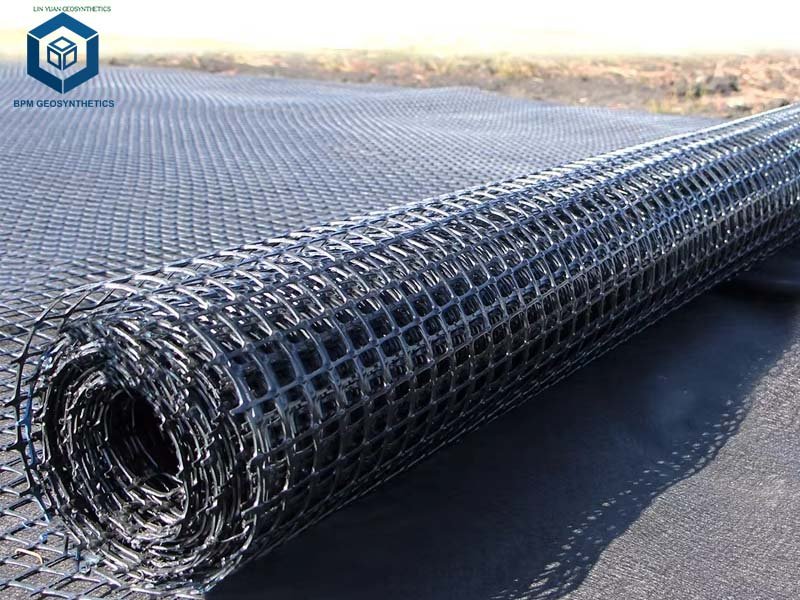
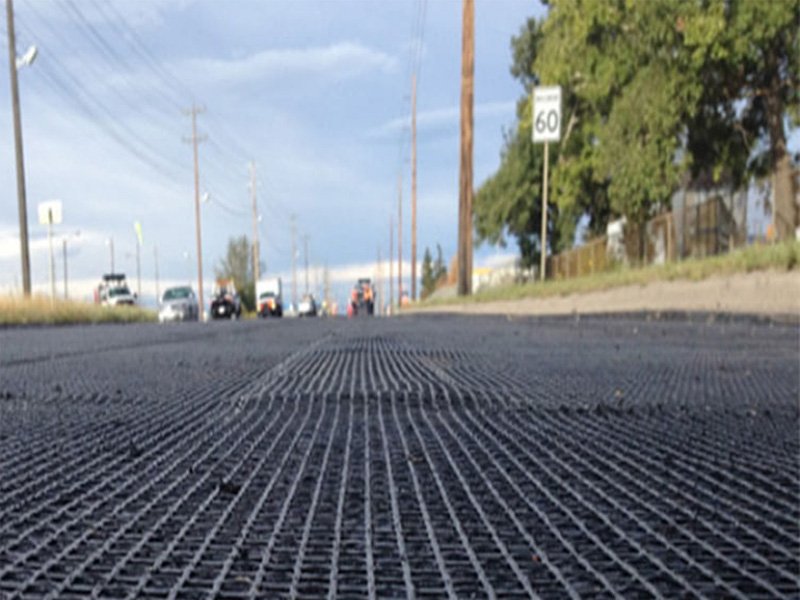
8. Choosing the Right Geogrid for Your Project
Selecting the appropriate geogrid involves balancing cost, performance, and application requirements:
- Roads and Pavements: Biaxial geogrids ($0.80–$3.50/m²) offer cost-effective load distribution.
- Retaining Walls: Uniaxial geogrids ($0.50–$2.50/m²) provide high tensile strength.
- Complex Foundations: Triaxial geogrids ($1.50–$5.00/m²) ensure multi-directional stability.
- Drainage Needs: Composite geogrids ($2.00–$7.00/m²) reduce hydrostatic pressure.
Consult with suppliers like Tensar or BPM for tailored quotes and project-specific recommendations.
9. Future Outlook for Geogrid Prices
The geogrid market is poised for growth, driven by:
- Sustainability: Eco-friendly geogrids will gain traction, potentially increasing prices by 5–10% due to R&D costs.
- Infrastructure Boom: Asia-Pacific’s rapid urbanization will stabilize prices in the $0.50–$3.00/m² range.
- Technological Innovation: Sensor-embedded and 3D woven geogrids will raise premium product prices to $5.00–$7.00/m².
By 2032, the market is expected to reach USD 1.97 billion, with a CAGR of 4.7%.
10. Conclusion
Geogrid mesh prices in 2025 range from $0.50 to $7.00 per square meter, influenced by material type, geogrid type, manufacturing process, project scale, and regional factors. By understanding these dynamics and leveraging strategies like bulk ordering, local sourcing, and certified suppliers, you can save 10–30% on costs while ensuring durable, high-performance infrastructure. For tailored quotes and expert advice, contact reputable manufacturers like BPM Geosynthetics, who meet ASTM and ISO standards. With the global geogrid market growing steadily, strategic choices today can optimize budgets and enhance project outcomes for years to come.



